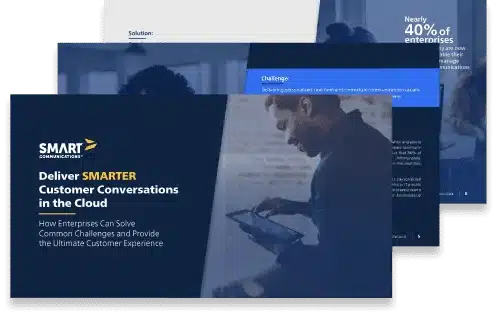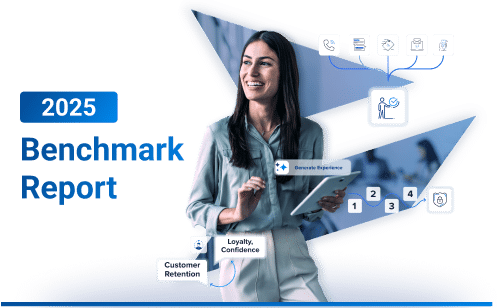Enhancing Healthcare Outcomes with Health Risk Assessments
By John Zimmerer, VP of Healthcare Marketing at Smart Communications
According to a recent Commonwealth Fund study of Organisation for Economic Co-operation and Development (OECD) data, healthcare in the United States is more expensive than anywhere else in the developed world, yet health outcomes are among the worst. Chronic health conditions play an outsized role on both sides of that equation.
The Centers for Disease Control and Prevention (CDC) attributes an astounding 90% of the nation’s annual healthcare expenditures to people with chronic and mental health conditions. The OECD data showed that 30.4% of adult Americans have multiple chronic health conditions. A different study estimated that the number of Americans aged 50 or older with at least one chronic disease was 137.25 million (nearly one-third of the total U.S. population) and that number will nearly double by 2050.
The OECD data put the per-person U.S. healthcare costs at nearly $12,000 (and rising), nearly twice as much as the other 12 developed countries in the dataset. While several factors contribute to this financial burden – ranging from inpatient and outpatient hospital visits to prescription drugs and preventative care - administration costs in the US stand out, being four times higher than those in comparable nations, as reported by the Peterson-KFF Health System Tracker. A second Commonwealth Fund study found that administrative expenses contribute 30% to the higher costs Americans pay versus other developed nations.
In combating these challenges, one tool emerges as a beacon of hope – Health Risk Assessments (HRAs). When utilized and efficiently administered, HRAs can help lower your healthcare administration costs, increase patient engagement, and improve health outcomes:
What Is a Health Risk Assessment?
AN HRA encompasses a comprehensive questionnaire covering a wide range of health topics:
-
Self-reported health status: Patients are asked to rate their overall health and well-being. This can provide pointers to potential health issues.
-
Personal health history: This includes past illnesses, surgeries, and hospitalizations.
-
Family medical history: Identifies potential genetic predisposition to certain conditions.
-
Chronic disease assessment: Identifies whether and how a patient is managing various conditions, including diabetes and cardiovascular conditions.
-
Medication review: Listing prescriptions, over-the-counter drugs, and supplements can help physicians spot drug allergies, interactions, and adherence.
-
Immunization status: Ensures that patients are up to date with recommended vaccinations.
-
Behavioral risks: Identifies lifestyle factors like smoking, alcohol consumption, and substance abuse impacting health.
-
Nutritional assessment: Evaluates the patient’s nutritional status, dietary habits, and weight management to help identify malnutrition or obesity.
-
Functional assessment: Evaluates the activities of daily living (ADLs) and independence.
-
Depression screening: Identifies individuals at risk for mood disorders, including depression.
-
Fall risk evaluation: Assesses mobility, balance, and fall history.
-
Social Determinants of Health (SDoH): Identifies how social factors such as housing stability, access to transportation, and social support systems affect a patient’s health.
Why Use a Health Risk Assessment?
HRAs have proven to improve health outcomes and lower healthcare expenses. The assessment guides the provider in creating a long-term, personalized care plan for the patient and making recommendations to improve the health of the patient. By proactively managing health, patients spend less money compared with reactively treating unmanaged conditions.
Despite the mandated use by the Centers for Medicare and Medicaid Services (CMS) with requirements for completion within 90 days of enrollment and annually thereafter, low completion rates persist among health plan members.
One reason for the lack of patient engagement could be the prevalent use of paper or inflexible HTML forms for HRA collection.
How to Increase HRA Completion Rates
Modern patients expect convenient, effortless experiences, particularly those with limited. or impaired cognitive or motor abilities. Using paper or even fillable PDF forms is not the way to go.
Electronic HRAs are specifically permitted by CMS. The Affordable Care Act (section 4103(b)) Element 4 states that the HRA “may be provided through other means appropriate to maximize accessibility and ease of use by beneficiaries, while ensuring the privacy of beneficiaries.” Which is why the CDC says that web based HRAs are the preferred modality for HRA administration.
Yet, from what our customers tell us, many of the electronic health risk assessment tools are difficult to manage. This makes implementing an HRA, particularly one that conforms to CDC recommendations, difficult at best.
Introducing SmartIQ™ for Health Risk Assessments
SmartIQ makes creating and updating the health risk assessment questionnaire a breeze, ensuring compliance with CMS and CDC guidelines for digital administration. Features include:
-
Compliance with Section 508 accessibility standards
-
Secure hosting on a HIPAA-compliant SaaS platform
-
Pulls in known patient data for review and revision
-
Compatibility across devices for convenience.
-
User-friendly interface for practitioners or staff
-
Seamless integration with CAPS, EMR, and PHR systems



